Ants are a common household pest that most homeowners will encounter at some point in their lives. While small, ants can be a massive headache both inside and outside of the home. Ants will often flock to high-traffic areas of the home such as the kitchen, dining room, garage, and outdoor entertaining areas like a deck or patio. Once ants have taken up residence and a true infestation occurs, removing ants from your home can be a tricky task. As a result of ineffective DIY treatments and resistance to many off-the-shelf products, homeowners often ask us: “how much does it cost to have ants professionally removed?” In this article, we will answer this question and many more.
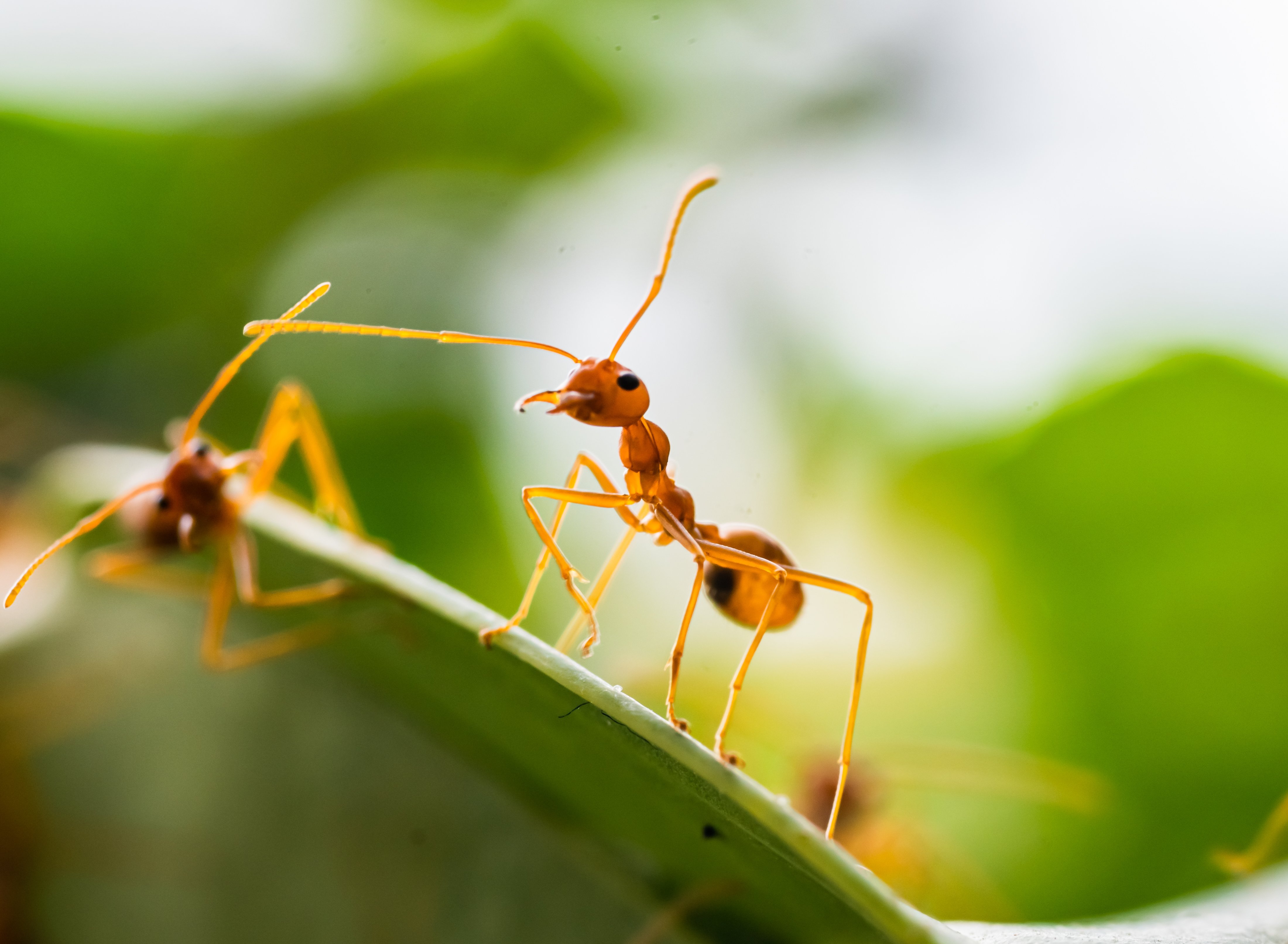
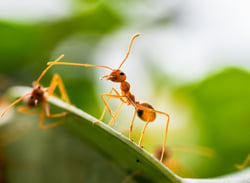
What kind of ants do I have in my home?
When discussing ant removal, it’s imperative to know what kind of ant species you have in your home. Ants are an incredibly abundant species of pest, and there are several ant species that you may have to contend with. Knowing what kind of ants are present in your home is crucial to their successful removal.
First, we must address the #1 culprit of ants in the home: the sugar ant. At least, that’s what you might think it is.
“Sugar ant” is actually just a universally adopted term for homeowners who experience ants in their homes. The real sugar ant actually resides in Australia and probably isn’t the true culprit for creepy crawlies in your American kitchen. Instead, you may be experiencing the infiltration of a number of different ants, most of which seem to be attracted to sugary foods. Many of these ants look very similar in size, color, and shape, making identifying them surprisingly difficult for the average person. With over 10,000 varieties of ants, it’s no wonder homeowners have opted for a catch-all term that best describes their problem pest!
There are a few common ants that many homeowners will encounter at some point in their lives. This includes odorous house ants, minuscule black or brown ants that are attracted to moisture. Odorous house ants, as their name suggests, emit a unique, rotten coconut-like (some say sweet!) smell when they are stepped on or squished. Though they don’t directly pose a health risk to homeowners, they can quickly contaminate food supplies and also happen to be the #1 ant problem in the Northeast. They are also the ant most commonly dubbed a "sugar ant" by homeowners due to their similar characteristics, despite being smaller and uniquely aromatic.
Another frequently found ant includes the pharaoh ant, which is best known for its inconspicuous small size and resistance to removal efforts. Yellow in color, these ants are attracted to food, sweets, and even other dead insects. Unlike the odorous house ant, pharaoh ants can easily spread disease and cause significant health issues to humans.
Still, there are pavement ants, who generally prefer to live outside near sidewalks, but occasionally wander inside in search of food. Pavement ants are typically larger, brown or black insects and are regarded as a difficult population to control, especially when mating. In addition, pavement ants have been known to sting when they perceive a threat.
Carpenter ants are another common household ant, though they are less often spotted due to their lifecycle and habits. Carpenter ants are attracted to damp and rotting wood and will often build nests behind walls or in ceilings where leaks have occurred. Up to half an inch in size and generally red, black, or brown in color, carpenter ants can cause both structural and cosmetic damage to your home.
Less common but nonetheless culpable culprits may include the fire ant and crazy ant. Fire ants reside in the south, while crazy ants are prevalent along the Gulf Coast. Fire ants are notorious for their painful stings that result in a raised welt. Crazy ants are known for their massive colonies and the tendency to infest a home’s walls and underneath carpets.
Because most ants tend to look similar, it often requires a pest control professional to properly identify the ant and therefore, effectively treat an ant problem. Consider contacting a reputable pest control service like EcoShield for help in identifying and eradicating ants.
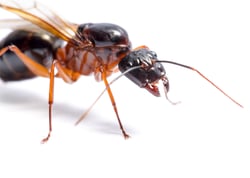 Carpenter Ant
Carpenter Ant
Why are there ants in my home?
Another key part of successfully eradicating ants from your home is determining why there are there in the first place. If you have an ant problem in your home, it’s important to know what attracts them. Ants are first and foremost interested in sweet and sugary foods that are typically kept in kitchens. They often convene around unnoticed spills, sticky countertops, or dropped treats on the floor. Ants will also sneak into closed cabinets or cupboards in search of hidden-away sweets, searching for any small cracks and crevices to enter through. This is why even the most vigilantly cleaned kitchens can still encounter ant infestations, despite taking proper precautions such as:
- Monitoring and cleaning pet food bowls
- Making sure there are no crumbs under the kitchen table
- Cleaning up spilled food or drinks
- Keeping lids on trash cans
- Making sure overripe fruit is not left out on the counter
- Not leaving dirty plates stacked in the sink or left out on the counter
- Properly sealing sealed containers of food in your cabinets and pantry
- Not having dripping faucets or leaky sink pipes
- Keeping garbage cans clean from leftover residue
- Checking to ensure there are no cracks or little openings around the foundation of your home
It can be especially difficult for homeowners with children or pets to keep ants at bay. Frequent spills or small messes act as beacons to sugar ants. While routine cleaning attempts can sometimes be effective, it should be understood that ants can be an incredibly challenging pest to rid yourself of completely. They are remarkably resilient and can make themselves at home virtually anywhere.
Prevention is usually much easier and more manageable than attempting to treat an infestation. If you’ve experienced ant problems in the past or are concerned that your home may be at risk, contact EcoShield for an inspection and front-line treatment plan. Protecting yourself before ants become a problem is the single best way to avoid ants altogether. Our year-round Shield Protection Plan can also prevent and control ants before they become problematic.
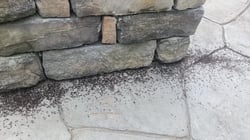 Large ant colony
Large ant colony
Where are the ants coming from?
And now for the most pressing question of all: where are all these ants coming from in the first place? The obvious answer is: well, from outside, of course! It may come as no surprise that many of the ants you’re encountering in your home have made their way in from the outside. Though this is true, it doesn’t exactly answer the how. How are the ants getting in?
Unfortunately, ants can make their way into your home through various pathways due to their resilience and itty-bitty size. Where there is a will, there’s a way, and ants have nothing if not willpower! Any small crack or crevice in the exterior of your home that connects to your home’s interior is a potential entry point for ants. Because ants require very little space to travel through, ant entry points are often easily overlooked and difficult to locate. The following are some common entry points for ants:
- Gaps and cracks where utility pipes or wires connect to your home
- Holes in window or door screens
- Gaps in window or door frames
- Damaged or nonexistent weatherstripping
- Cracks in your home’s foundation or siding
- Exterior ventilation units
If you’re already experiencing a problem with ants in your home, there’s a strong possibility that some of them aren’t making their way indoors at all but are rather being born right in your home! Existing ant colonies may build nests and hatch eggs in your home, creating a whole generation of ants that are born tenants of your house. This is often the case in instances of true infestation. It can also make removal and prevention incredibly difficult, especially for those attempting to DIY their way out of being overrun by ants.
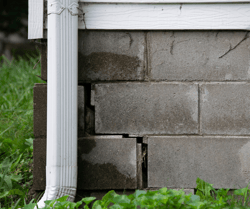 Cracks in your foundation are a great entry point for ants
Cracks in your foundation are a great entry point for ants
How much does it cost to get rid of ants in my home?
At last, we’ve arrived at the question on everyone’s mind: how much?! Unfortunately, the answer isn’t as straightforward as you may have hoped.
The honest answer is that the cost associated with ant removal is highly dependent on the extent of the infestation, the species of ant in your home, and the service offered by your chosen pest professional. According to HomeAdvisor, ant removal can cost anywhere from $80-$500 with the average customer paying about $150 for a single treatment. Prices can vary significantly based on the variety of factors previously mentioned, along with your geographic location and accessibility to the infested area.
When choosing the best pest professional for you, we urge you to keep a few things in mind. While the lowest quote may be appealing, be sure to inquire about the specific guarantees (or lack thereof) for the service you purchase. Some companies may not include a follow-up visit for unsuccessful treatments, or they may treat existing ants but offer no prevention methods that ensure the ants don’t return. We encourage you to do your research and ask as many questions as you need to make the best choice for you and your family.
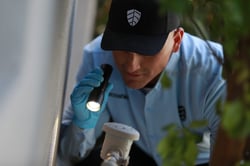 EcoShield pest technician performing an inspection of a home
EcoShield pest technician performing an inspection of a home
Does EcoShield treat ant infestations?
Yes, we do!
In fact, the only way to ensure you banish ants for good is to utilize a reputable pest control service like EcoShield Pest Solutions. EcoShield’s botanical solutions are safe and effective in removing any kind of ant that sets up camp in your home. Our 100% guaranteed service will save you the stress of DIY solutions and recurring ant problems associated with them. EcoShield's proactive approach to ant control not only treats the primary pest issue but also focuses on preventing ants and other pests. Our year-round Shield Protection Plan can also prevent and control ants before they become a problem.
Call us today for a free, no-obligation estimate and take back your home! Call us at: (888) 744-1284 or fill out the form on this page.